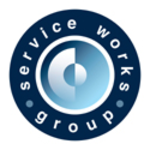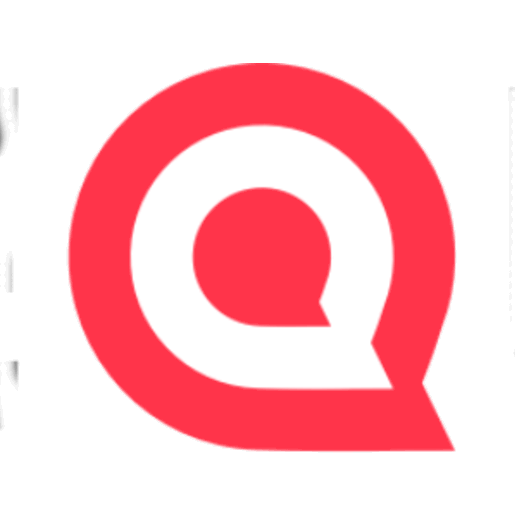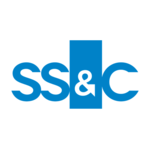Description

QFM

SeQure - Integrated Workplace
Comprehensive Overview: QFM vs SeQure - Integrated Workplace
QFM and SeQure are two distinct platforms that cater to the different needs within the facilities and workplace management sectors. Here's a comprehensive overview of these products, addressing their primary functions, target markets, market presence, and differentiating factors.
a) Primary Functions and Target Markets
QFM by Service Works Global:
-
Primary Functions:
- QFM is a comprehensive facilities management software solution designed to streamline and enhance operations related to building and infrastructure maintenance.
- It provides modules for maintenance management, asset management, help desk and reactive maintenance, planned maintenance, and compliance management.
- Offers features for space management and room booking, optimizing the use of workplace resources.
- It includes reporting and analytics functions to inform decision-making with real-time data insights.
-
Target Markets:
- Primarily targeted at organizations with complex facilities management needs across various sectors such as healthcare, education, government, corporate real estate, retail, and hospitality.
- Suitable for those seeking robust maintenance management and compliance features.
SeQure - Integrated Workplace by SeQure Group:
-
Primary Functions:
- SeQure is a platform designed to facilitate a secure and efficient work environment.
- Functions include visitor management, desk booking systems, and overall workspace optimization.
- Offers modules for managing employee well-being and safety, which is especially relevant in the context of post-pandemic workplace considerations.
-
Target Markets:
- Primarily targets corporate and commercial office environments where managing employee mobility and workspace optimization are priorities.
- Ideal for businesses that need enhanced security, visitor management, and space utilization solutions in their workplace.
b) Market Share and User Base
-
QFM:
- QFM has a more extensive presence in sectors that require detailed facilities management, with notable usage in hospitals, educational institutions, and government facilities.
- The user base is typically characterized by facilities managers and operations teams charged with maintaining compliance and operational efficiency across large infrastructures.
- QFM’s market share reflects its reputation in sectors where maintenance, compliance, and operational continuity are critical.
-
SeQure:
- SeQure focuses on the corporate sector, particularly in environments where adaptable and secure workspaces are prioritized.
- The user base primarily includes workplace managers, HR professionals, and IT teams focused on creating efficient and flexible office environments.
- Its market share is significant among businesses that emphasize modern, adaptable workplaces with enhanced safety protocols.
c) Key Differentiating Factors
-
QFM:
- The depth of capabilities in facilities management makes QFM stand out, especially in specialized fields like healthcare and sophisticated multi-site operations.
- Strengths in compliance, asset management, and detailed reporting provide value to sectors that operate under stringent regulatory requirements.
- Its traditional focus is on back-end operations, delivering robust capabilities for monitoring and managing facilities and maintenance tasks.
-
SeQure:
- Emphasizes modern workplace trends, such as hot-desking, flexible office spaces, and digital visitor management.
- Differentiates itself with a strong focus on employee experience and safety, including features that help organizations manage COVID-19 safety protocols.
- Encompasses a user-friendly interface designed to be accessible for a broader range of non-technical users, from office managers to general employees.
In summary, while QFM targets a diverse range of industries with a focus on comprehensive facilities management, SeQure is more tailored for corporate settings where workspace optimization and employee safety are prioritized. Each product has carved out its niche, influenced by the different technological emphases and evolving needs in their respective target markets.
Contact Info

Year founded :
2014
Not Available
Not Available
Estonia
http://www.linkedin.com/company/qfm-ee

Year founded :
Not Available
Not Available
Not Available
Not Available
Not Available
Feature Similarity Breakdown: QFM, SeQure - Integrated Workplace
As of my last update, QFM and SeQure - Integrated Workplace are two software solutions that focus on facilities and workplace management. Both are designed to enhance the efficiency of workplace operations, though they may cater to slightly different aspects or markets within this broader category. Here is a general breakdown of their feature similarities and differences:
a) Core Features in Common
-
Asset Management:
- Both QFM and SeQure allow businesses to track, manage, and maintain physical assets within the workplace. This includes monitoring lifecycle status and scheduling maintenance.
-
Work Order Management:
- Both solutions offer capabilities for creating, assigning, and tracking work orders to ensure timely maintenance and repair activities.
-
Space Management:
- These products help in managing workspace allocations, usage, and optimization, enabling businesses to make the best use of available space.
-
Maintenance Scheduling:
- Predictive and preventive maintenance scheduling features help in regular upkeep of equipment and facilities to avoid unexpected failures.
-
Reporting and Analytics:
- Both platforms provide tools for generating reports and analyzing data, which assists in making informed operational decisions.
b) User Interface Comparison
-
QFM:
- Known for a user-friendly interface that caters well to technical and non-technical users alike. The dashboard is typically organized for easy navigation and offers a customizable layout to prioritize important metrics and data.
-
SeQure - Integrated Workplace:
- This product often emphasizes an intuitive user experience with a modern design ethos. The interface is sleek and designed with simplicity in mind, focusing on engaging end-users while maintaining robust backend functionality.
c) Unique Features
-
QFM:
- Comprehensive Integration Capabilities: QFM excels at integrating with other enterprise systems, making it suitable for organizations that need seamless connectivity with their existing IT ecosystem.
- Advanced IoT Integration: Offers integration with IoT devices for real-time data collection and monitoring.
-
SeQure - Integrated Workplace:
- Focus on Security and Compliance: SeQure tends to emphasize features that enhance workplace safety and compliance, integrating security management into the workspace environment.
- User Experience and Engagement: Often includes unique tools aimed at enhancing employee engagement and satisfaction, such as social features or feedback systems.
These features are subject to change as software products are frequently updated and improved. It is always best to refer directly to the companies' latest product documentation or contact them for the most recent feature comparisons.
Features

Asset Management
Facility Management
Work Order Management

Enhanced Productivity Tools
Data Security and Compliance
Seamless Collaboration
Best Fit Use Cases: QFM, SeQure - Integrated Workplace
QFM and SeQure are software solutions designed to manage and optimize workplace operations, though they cater to slightly different aspects of facility and workplace management. Here's how each might best fit various types of businesses or projects and the scenarios in which they excel:
QFM (Quality Facilities Management)
a) Best Fit for Types of Businesses or Projects:
-
Large Enterprises with Extensive Facilities: QFM is ideal for businesses with sizable physical assets that require detailed and comprehensive facilities management. This includes large office complexes, university campuses, and factories.
-
Healthcare Institutions: Hospitals and healthcare facilities benefit from QFM's capabilities in planned maintenance, asset tracking, and compliance management, ensuring critical equipment is always operational.
-
Retail Chains with Multiple Locations: Retail businesses that operate across various locations can use QFM for centralized management of maintenance tasks, reducing downtime and ensuring consistent customer experiences.
-
Real Estate and Property Management Companies: Companies managing extensive property portfolios can use QFM for maintenance management, tenant requests, and property inspections.
-
Public Sector and Government Facilities: These entities often manage multiple buildings and require robust facilities maintenance and asset management solutions.
SeQure - Integrated Workplace
b) Preferred Scenarios:
-
Modern, Agile Workspaces: SeQure is ideal for businesses focusing on creating agile work environments that facilitate flexible working arrangements and employee well-being, such as tech startups and creative agencies.
-
Organizations Emphasizing Employee Experience: Companies keen on enhancing employee experience through better space utilization and smart working environments might prefer SeQure for its emphasis on workplace optimization and employee engagement tools.
-
Businesses Adopting Hybrid Work Models: SeQure supports managing hybrid workforces by allowing for seamless space reservations and occupancy management, crucial for companies transitioning to or operating within a hybrid work model.
-
Innovative Corporate Environments: Corporations aiming to create a smart, connected workplace with integrated technology solutions, including IoT for real-time space usage analytics, can leverage SeQure.
d) Catering to Different Industry Verticals or Company Sizes:
-
Industry Vertical Adaptation:
- Healthcare, Education, and Public Sector: QFM is more suited due to its strong emphasis on maintenance, compliance, and asset management critical in these sectors.
- Corporate and Creative Industries: SeQure's strengths in space and resource optimization make it appealing to industries where enhancing employee collaboration and experience is a priority.
-
Company Size:
- Large Enterprises: Both solutions can scale, though QFM's robust maintenance and asset management features are more suitable for large organizations dealing with complex facility management needs.
- SMEs and Startups: Smaller businesses or startups may find SeQure more suitable, especially those focused on flexible working and employee satisfaction rather than extensive facility management.
Overall, QFM is best for businesses emphasizing extensive facilities management and maintenance. In contrast, SeQure is tailored towards companies focusing on modernizing the workplace and enhancing employee engagement within the evolving landscape of work environments.
Pricing

Pricing Not Available

Pricing Not Available
Metrics History
Metrics History
Comparing teamSize across companies
Conclusion & Final Verdict: QFM vs SeQure - Integrated Workplace
To provide a conclusion and final verdict for QFM and SeQure - Integrated Workplace, let's consider several key aspects to determine which product offers the best overall value and outline the pros and cons of each.
Conclusion and Final Verdict
a) Best Overall Value
Determining the best overall value between QFM and SeQure - Integrated Workplace depends on the specific needs and priorities of your organization. Both products have strengths that could make them the right choice for different types of users:
-
QFM: Known for its comprehensive facility management capabilities, QFM may offer better value for organizations with complex facilities and asset management needs. Its robust features in maintenance management, space utilization, and asset tracking make it an attractive option for large-scale operations.
-
SeQure - Integrated Workplace: Offers an integrated approach focusing on workplace safety and space management, appealing to organizations that prioritize real-time data, user-friendly interface, and mobile accessibility. It might provide better value for businesses keen on enhancing their workplace safety and user experience.
The best overall value isn't one-size-fits-all and depends on what features and capabilities are most critical for your organization.
b) Pros and Cons
-
QFM Pros:
- Comprehensive asset and maintenance management features
- Suitable for large and complex facility operations
- Established market presence and robust support systems
-
QFM Cons:
- Potentially more complex to deploy and manage
- Higher costs associated with implementation and maintenance
-
SeQure - Integrated Workplace Pros:
- Intuitive and user-friendly interface
- Strong focus on safety and compliance
- Mobile-friendly with real-time data access
-
SeQure - Integrated Workplace Cons:
- May lack some advanced features needed for intricate asset management
- Smaller companies might find it too feature-rich if their needs are simpler
c) Recommendations
-
Evaluate Needs: Begin by evaluating your specific needs. If your organization has complex facilities requiring detailed maintenance and asset management, QFM could be more suitable. However, if you prioritize workplace safety, efficiency, and modern user interfaces, SeQure might be better aligned with your goals.
-
Consider Scalability: Consider how each product scales with your business growth. Ensure the solution chosen can handle increased user loads and additional facilities without significant additional costs or complexity.
-
Trial and Feedback: If possible, engage in trial periods of both products and gather feedback from your team. This hands-on experience will help you assess how each system fits within your existing workflows and culture.
-
Budget and ROI: Analyze the cost versus benefits that each solution offers over the short and long term. Weigh the initial and ongoing costs against the potential improvements in efficiency, safety, and data insights.
Overall, while both products have significant advantages, the decision should be closely aligned with your business objectives, operational needs, and strategic priorities.
Add to compare
Add similar companies



